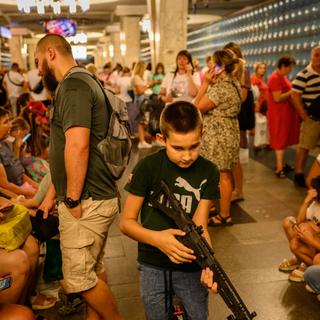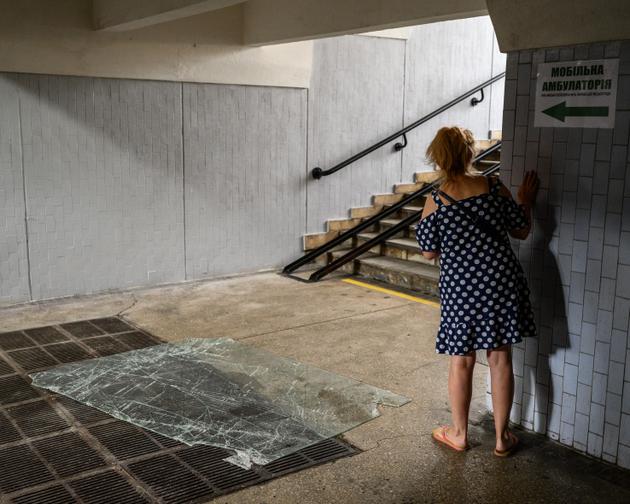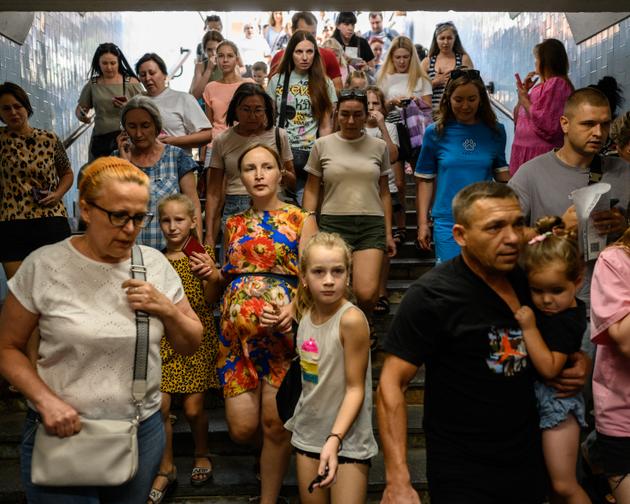


War in Ukraine: Kharkiv hit by hail of missiles in retaliation for Kyiv's attacks on Russia
FeatureAfter six weeks of calm, Ukraine's second-largest city was once again the target of massive bombardments. Six people died on Friday and 47 others were wounded on Sunday, on the eve of the start of the new school year.
Boom. And boom again, so much louder. It was 1 pm on Sunday, September 1, and children had been devouring their cotton candy and jumping on the trampoline reserved for them every weekend in Kharkiv's large indoor market, Barabashovo. A siren barely had time to wail when two huge explosions suddenly shocked the families, workers and shoppers into action. Everyone raced down the subway stairs at the entrance to the market, before realizing that the blasts had hit just a little further on.

Two ballistic missiles had just fallen, not on the market, but on the Chudho shopping mall, one metro station away, taking by surprise the families who came to do their shopping in this mall open until 11 pm, seven days a week. "Here, by the time you hear the siren, the missile has already fallen," is the standing joke, full of black humor, of Kharkivians. And it's true, Ukraine's second-largest city is only 25 kilometers from the border and 70 kilometers from the Russian city of Belgorod, from where the shots were fired on Sunday, and alerts are of little use.
On Sunday, six more of the eight missiles fired by the enemy destroyed the Kharkiv Sports Palace in another, more central district, Nemyshlianskyi. And, each time, the same stories from neighbors and survivors: a blast so powerful that it "lifts" you up, apartments that start to "shudder." In front of the Chudho supermarket, the glass windows of the Akademika-Pavlova metro station shattered, and even the small grocery store set up in a corridor was damaged. The ground around was covered with shards and bits of missile for dozens of meters and, on one side of the sports hall, with spiky shells from chestnuts blown away by the blast.

The Kharkiv Sports Palace was important for the city. A 4,000-seat complex adorned with brutalist frescoes, with, inside, an ice hockey rink, a basketball court, combat and fitness rooms, a few shops such as a hairdresser, and, outside, on an esplanade, a huge climbing wall. Now, in the grass all around lay the holds used for climbing, blown off and pulverized by the explosion.
Russian technique
"For the past year, the Palace has also been used as a food distribution center," explained Yevgeny, a former policeman and a local, wearing a Nike-branded t-shirt. He was a regular, too, at the Palace's dumbbell training sessions, as his biceps confirmed. "It hosts children's Christmas parties and, for a long time now, concerts," he continued. "Move quickly," he led us, slaloming between rescue vans to the foot of a statue. It's Vladimir Vyssotski, the famous Moscow singer. "He came to sing here in the late 1970s, and we built him a monument," said Evgeny. Cast in bronze, the musician and his guitar survived the explosion of September 1.
You have 59.13% of this article left to read. The rest is for subscribers only.
